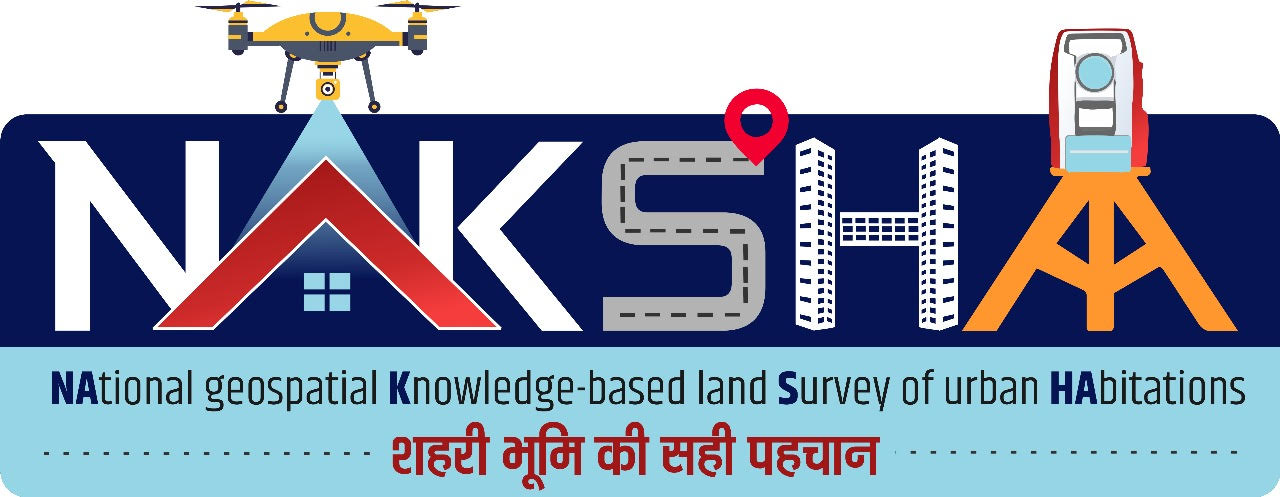Context:
The Lal Bahadur Shastri National Academy of Administration (LBSNAA), in partnership with the Department of Land Resources (DoLR), Ministry of Rural Development, recently conducted a two‑day National Training‑cum‑Workshop (6–7 October 2025) for District Magistrates and Collectors. The workshop is designed to prepare district heads for the upcoming rollout of NAKSHA (National Geospatial Knowledge‑based Land Survey of Urban Habitations). This effort is part of a larger drive under the Digital India Land Records Modernization Programme (DILRMP) to modernize urban land governance using geospatial technologies.
About NAKSHA scheme:
-
- NAKSHA (National Geospatial Knowledge‑based Land Survey of Urban Habitations) is a pilot programme launched in February 2025 in 152 ULBs across 26 states and 3 Union Territories.
- The programme seeks to digitally map urban land parcels, integrate spatial data (via GNSS, GIS, Web‑GIS), and make land records more transparent, verifiable, and accessible to citizens and administrators.
- It aligns with the broader vision of “One Nation, One Land Record” — bridging rural and urban record systems and reducing fragmentation and disputes.
- NAKSHA (National Geospatial Knowledge‑based Land Survey of Urban Habitations) is a pilot programme launched in February 2025 in 152 ULBs across 26 states and 3 Union Territories.
About Digital India Land Records Modernization Programme (DILRMP):
The Digital India Land Records Modernization Programme (DILRMP) is a Central Sector Scheme launched by the Government of India in April 2016. It was created by merging and modernizing two earlier schemes — Computerisation of Land Records (CLR) and Strengthening of Revenue Administration and Updating of Land Records (SRA & ULR). Before being renamed as DILRMP, it was known as the National Land Records Modernization Programme (NLRMP) since 2008.
The main objectives of DILRMP are:
· Digitization and modernization of land records across India.
· Creating an Integrated Land Information Management System (ILIMS) that links textual records (Record of Rights) with spatial data (maps).
· Ensuring real-time access to land data, reducing the scope for land disputes and fraud.
· Improving transparency, accountability, and efficiency in land governance.
· Enabling citizen-centric services by minimizing the need for physical visits to offices.
· Helping in planning, taxation, e-governance, and infrastructure development by making land data more accessible and reliable.
Current Progress (as of 2023–24):
· Record of Rights digitized in ~95% of villages.
· Cadastral maps digitized in ~68% of required areas across 28 States/UTs.
· Geo-referencing of maps completed for ~49.1% of villages.
· Computerisation of Sub-Registrar Offices in ~93–94% of cases.
· Integration of land records and registration offices achieved in ~75–87% of cases (state-wise variation).
Conclusion:
The LBSNAA–DoLR National Workshop on NAKSHA marks a critical inflection point in India’s journey toward digital, transparent, and accountable urban land management. By equipping district-level leadership with technical, administrative, and regulatory knowhow, the government is laying the foundation for scalable and citizen-friendly land governance. If well executed, NAKSHA can drastically reduce disputes, improve tax bases, enhance planning, and anchor India’s broader ambition of One Nation, One Land Record.







